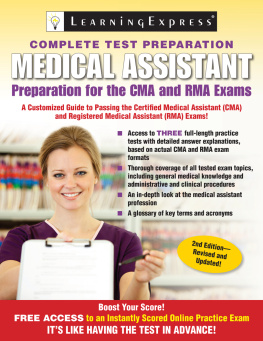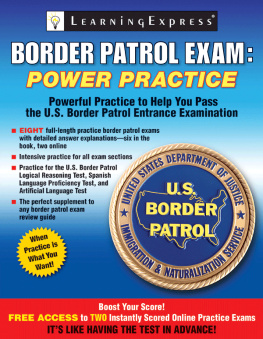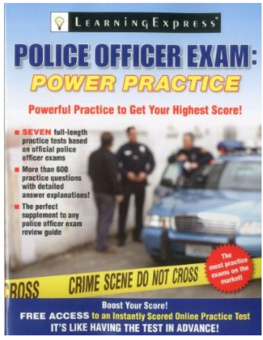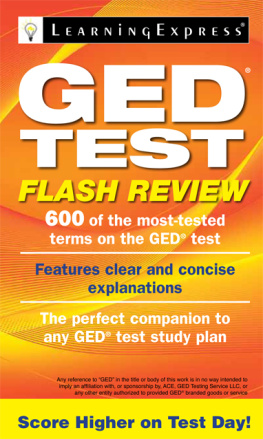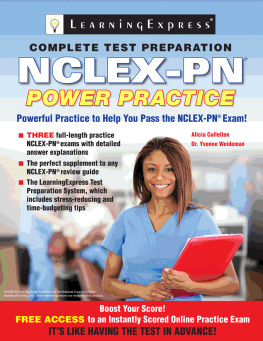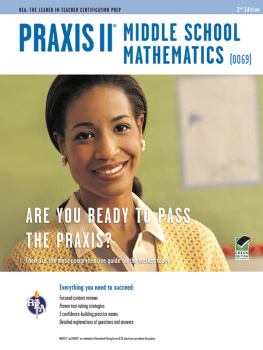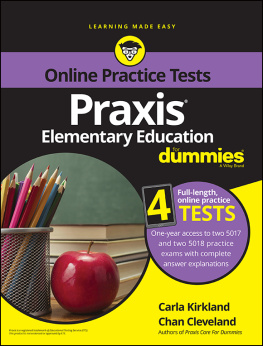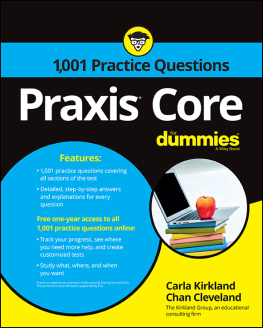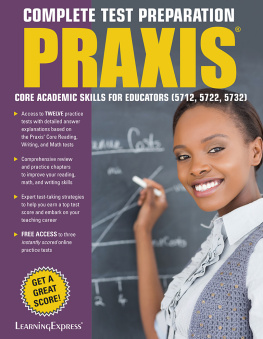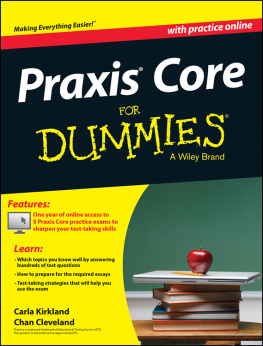Chapter 1
The Praxis Series of Tests
Chapter Summary
This chapter will familiarize you with the Praxis Series of tests which are administered by the Educational Testing Service (ETS). (Go to www.ets.org/praxis.) This chapter also discusses all of the pertinent information about the Praxis Series, including contact information, the registration process, examination fees, and test formats and content. Additionally, you will learn about scoring, what the scores are used for, and how they are reported.
A ll of the exams in the Praxis Series of tests are designed to measure the scholastic and pedagogical capability of teachers at different stages of their careers. The first exam in the Praxis Series, the Praxis I Pre-Professional Skills Test (PPST), may be taken early in a students college career to qualify for entry into a teaching credential program. It is also taken by prospective teachers to be considered for a license in states not requiring education degrees. The Praxis I PPST is comprised of individual tests that measure basic skills in reading, mathematics, and writing. The second group of exams in the Praxis Series, the Praxis II, is taken by individuals entering the teaching profession as part of their states teacher licensing and certification process. The Praxis II consists of three groups of tests that measure subject-specific content knowledge, general pedagogical knowledge, and teaching foundations.
The Praxis Series of tests are administered in both a paper- and computer-based format. This chapter will discuss both in detail. Although both forms of the test cover the same content, the procedures for registering and taking the tests are very different; therefore, these steps will be discussed separately in this chapter.
Purposes of The Praxis Series of Tests
Praxis I is generally taken to gain entry into a teaching credential program and for state licensing. Some educational organizations require that you achieve passing PPST scores to gain membership. These organizations include the American Speech-Language-Hearing Association (ASHA), the Department of Defense Education Activity (DODEA), and the National Association of School Psychologists (NASP). Praxis II is taken by would-be teachers who are applying for state licensure as a teacher.
States Using the Praxis Series of Tests
Each state sets its own requirement for which tests to take and what score will be accepted as passing. Information regarding specific state or organization requirements may change from time to time. For accurate, up-to-date information, refer to the official Praxis website at www.ets.org/praxis/ and your states Education Department.
Note: Although some information for the requirements of California is included on the Praxis website, those interested in meeting them should contact the California Commission on Teacher Credentialing (CTC) online at www.ctc.ca.gov.
Important Contact Information
ETSThe Praxis Series
P.O. Box 6051
Princeton, NJ 08541-6051
Phone: 609-771-7395, MF 8 a.m. to 7:45 p.m. (EST) (except for holidays)
Phone for the Hearing Impaired: 609-771-7714
Fax: 609-530-0581 or 609-771-7906
Website: www.ets.org/praxis/
E-mail directly through the website at www.ets.org/praxis/contact
What Is the Praxis I Like?
The Praxis I PPST is designed to see if you have the academic skills to be an effective teacher. How are your basic skills in:
Reading?
Math?
Writing?
All of the questions on the Praxis I, with the exception of the essay portion of the PPST Writing test, are in multiple-choice format. Each multiple-choice question has five answer choices. Because test scoring is based only on the number of items answered correctly, you are not penalized for incorrect answers on the PPSTsso be sure to fill in all of the answer blanks rather than leaving difficult questions unanswered. Even a guess is better than leaving an answer blank!
Lets look at each test.
Reading
The PPST Reading test measures your ability to comprehend, analyze, and evaluate written information. You will be asked to read a number of passages (which may vary in length from 100 to 200 words) and then answer questions that test your ability to comprehend what you have read. The genre and reading levels of the passages will vary. You will be tested only on your ability to understand and analyze the selection; you will not be required to have specific knowledge about the topics discussed in the passages. Chapter 4, Praxis I Reading Test Review, provides more detailed coverage of the question types you will face. The following are general types of questions that you may be asked:
Literal Comprehension
main idea questions
supporting idea questions
organization questions
vocabulary questions
Critical and Inferential Comprehension
argument evaluation questions
inferential reasoning questions
generalization questions
Mathematics
The PPST Mathematics test measures your proficiency in math. Generally speaking, the test requires a competency at the high school or first-year college level. The lessons in Chapter 5, Praxis I Mathematics Test Review, will give you more in-depth coverage of test content. Here are the four main math skills that will be tested:
Numbers and Operations
order
equivalence
numeration and place value
number properties
operation properties
computation
estimation
ratio, proportion, and percent
numerical reasoning
Algebra
equations and inequalities
algorithmic thinking
patterns
algebraic representations
algebraic reasoning
Geometry and Measurement
geometric properties
the xy-coordinate plane
geometric reasoning
systems of measurement
Data Analysis and Probability
data interpretation
data representation
trends and inferences
measures of center and spread
probability
Writing
The PPST Writing test is divided into two sections: The first section consists of multiple-choice questions that require you to find and/or correct errors in standard English; the second part asks you to write a 30-minute essay on an assigned topic, which will represent 50% of your total writing test score. The Praxis I Writing Test Review (Chapter 6) provides detailed information on how to approach both sections of the writing test.
The multiple-choice section of the writing test is designed to measure your ability to use standard English correctly and effectively and is divided into two parts: usage and sentence correction.
Usage questions test your knowledge of:
structural and grammatical relationships
mechanics
idiom or word choice
Usage questions also test your ability to identify error-free sentences.
Sentence Correction questions test your ability to:
select the best way to state a given phrase or sentence
correct sentences with errors in grammar, mechanics, idioms, or word choice
You are not expected to know formal grammatical terminology.
The essay portion of the PPST Writing test is designed to evaluate your ability to express ideas clearly and effectively in standard written English. You will be presented with a topic and asked to state an opinion in essay form. The given topics present situations that are generally familiar to all educated people and do not require any specialized knowledge in a particular field. Although you will be posing an argument and drawing conclusions based on examples from personal experience or observation, you will not be graded on your opinionyou will be scored only on how effectively you are able to get your ideas across.
The following qualities will be taken into consideration when your essay is scored:
Next page

